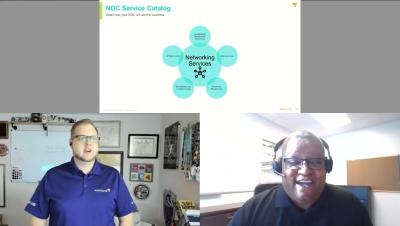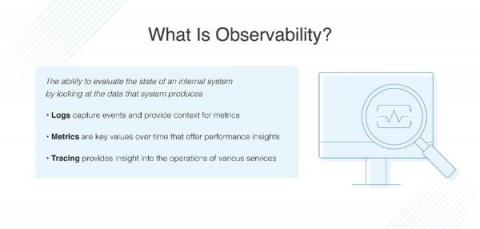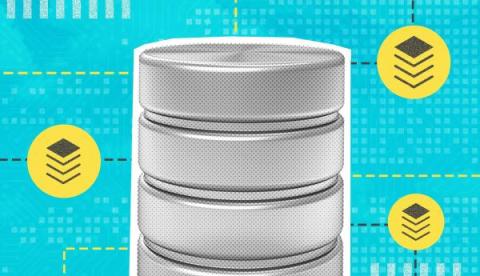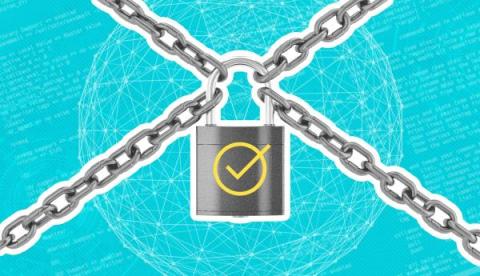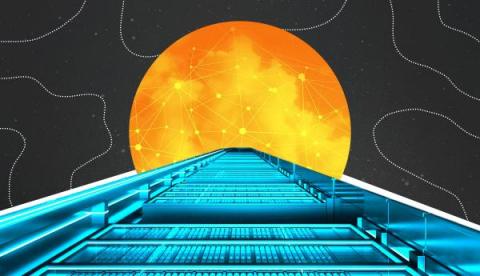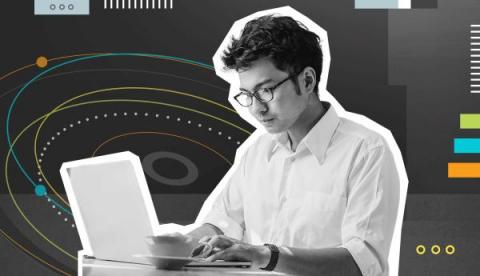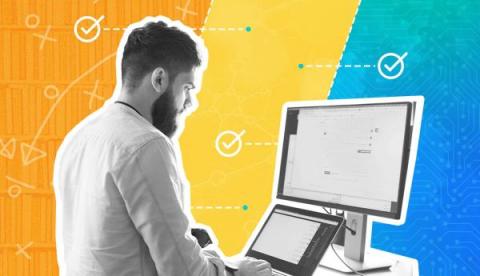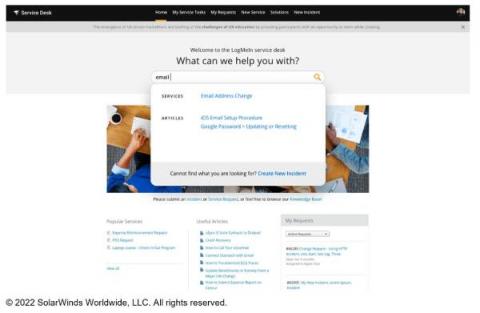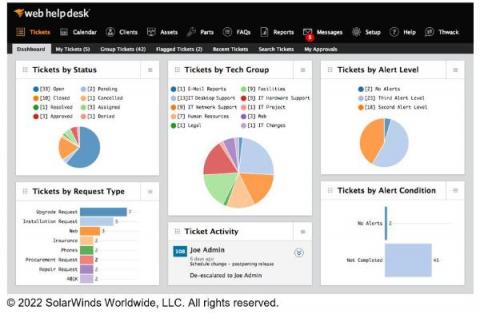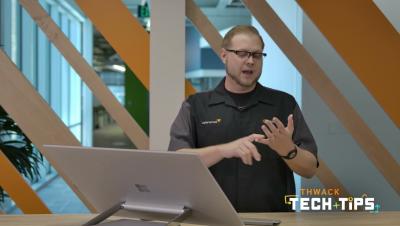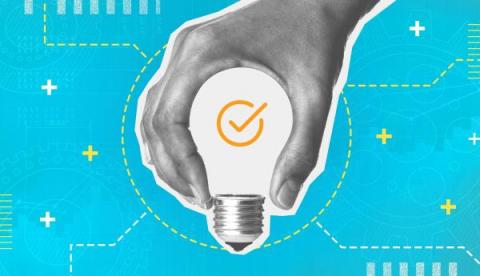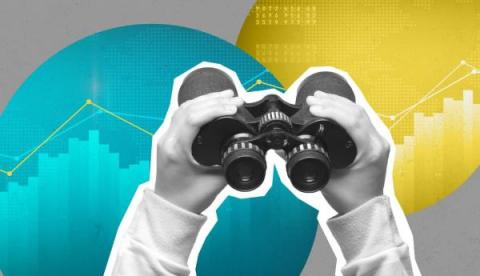Operations | Monitoring | ITSM | DevOps | Cloud
December 2022
Edge Computing vs. Cloud Computing and What It Means For Your Environment
For decades, network administrators have tried to combine and centralize compute power. And the premise behind cloud computing was to delegate your data storage, analytics, and computing intelligence to some remote data center instead of or in addition to these resources remaining solely on-premises. Nowadays, increased processing power is combining with increased demands on response time to reverse the process. This blog post will dive deeper into the resulting trend, called edge computing.
Observability vs. Monitoring
Today, organizations are moving toward distributed systems to provide top-notch application services. This trend has made both observability and monitoring essential practices. As observability and monitoring are often used interchangeably, many people tend to get confused. It’s crucial to understand the difference between the two to use the right approach for a given scenario.
Can an Application Exist Today Without a Database?
As a data professional, I often think about all the things around me generating data and consider where this data is ultimately being used. Have you ever taken a minute to consider exactly how much data is being generated at any point in time? I love collecting data and looking at ways it can be used and living in a “smart” home with appliances logging and reporting usage patterns certainly provides a lot of opportunities.
Building Cyber Resilient Ecosystems
At SolarWinds, we focus on helping our customers accelerate their business transformation through solutions designed to be simple, powerful, and secure. Over the past couple of years, we’ve made significant investments in our security and software build process with the goal of leading the industry in cyber resiliency. Recently, I spoke at the VentureBeat Intelligent Security Summit on the topic of Becoming Secure by Design with CrowdStrike Vice President of Intelligence Adam Meyers.
How to Add SD-WAN Devices to Hybrid Cloud Observability
SD-WAN network monitoring can help you better ensure SD-WAN performance and more easily troubleshoot slowdowns or outages. In this video, you’ll learn how to add new SD-WAN devices for monitoring so that you can get the insights you need for Meraki devices with Hybrid Cloud Observability.
A Guide to Stack Overflow's Path to the Cloud
Like many companies, Stack Overflow is trying to get out of the business of running our architecture in our own data centers; instead, we want to offload some of the more mundane parts of system administration to a cloud service offering like Azure. I’m going to cut to the chase for the purpose of this article and concede we’ve already decided on Azure for the majority of our infrastructure and, most importantly to me, our databases.
Top Reasons Customers Are Moving to SolarWinds Hybrid Cloud Observability
I’m frequently asked about why customers select SolarWinds® Hybrid Cloud Observability. Given the wide variety of options available, I thought it would be helpful to put together a compilation of what customers have told us as their top reasons for making the switch.
ITIL vs. DevOps: Are You Using These Frameworks Right?
Both DevOps and ITIL are two popular frameworks in the IT space and get a lot of attention. However, while both are frameworks, DevOps is more of a collaboration method and shift in thinking vs. ITIL, which is a set of detailed guidelines for IT service management. You can be fairly flexible when it comes to your DevOps implementation in your organization, ITIL is more rigid, with very prescriptive guidance necessary for it to earn the label of ITIL.
Our Inaugural Customer Advisory Board Meeting: Solving Business Challenges With Observability
This past October, we had the pleasure of meeting with 11 IT leaders from diverse industries—including healthcare, financial services, education, telecom, logistics, and technology— as part of our inaugural SolarWinds Customer Advisory Board (CAB) meeting. The CAB is an exciting initiative for both myself, and our GVP of Customer Success, Anselm Peng.
What to Know Before Becoming an Application Engineer
Application engineers play a crucial role in bridging customer needs and the efforts of application development teams. Applications are becoming more complex—businesses are seeking to deliver more services while the software engineering components underlying those them are expanding and interacting in new ways. This combination of factors is driving the need for application engineers who can understand both the business and the technical aspects of applications.
ITIL Knowledge Management Best Practices
The IT Infrastructure Library (ITIL) describes a framework for delivering IT services according to best practices, including best practices for what’s known as knowledge management. Knowledge management, which includes being able to gather, store, and share IT knowledge, is critical for IT service management (ITSM).
Guide to Proactive IT support and problem solving with dedicated tools
As organizations increasingly adopt more devices, applications, and other technologies, IT teams addressing problems before they arise is a vital part of avoiding downtime, maintaining productivity, and ultimately growing revenue. While a reactive approach has traditionally been good enough, the most successful organizations are increasingly taking proactive measures to ensure employees always have access to what they need with little or no downtime.
How to Set Up an Alert on NetPath
See how you can map each hop of the path to critical business services, whether you have an on-premises server or a cloud-hosted app using NetPath. When users can't reach the service, know instantly where the issue lies so you can create a mitigation plan.
7 Help Desk Automation Tips You Can Start Using Today To Save Time, Effort, and Costs
When we look at the calls our help desk receives, we see many of the same issues repeatedly. Some of the most common calls help desk agents receive involve issues like password resets, new hardware requests, and generating standard reports. And when we examine our IT environments as a whole over the last decade or so, there has been a huge emphasis on automation. Why? We have learned that automation reduces risk, streamlines workflows, and makes everyone more productive.
The Impact of Information Overload on Businesses Today
Over half of the world’s population are active on social media, with a typical user spending two hours and 25 minutes each day, equating to roughly one full waking day of their life each week. According to a report published by researchers at the University of California, San Diego—on average, we consume about 34 gigabytes of data and information each day.
A Simplified Guide to OpenTelemetry
Digital services are increasingly built as a collection of components working in concert to deliver significant business functions. Understanding how these components of a system are working is crucial to reliably delivering a service. With many systems interacting, it can be difficult, if not impossible, to understand the state of your services and their dependencies without detailed data about how they function.


